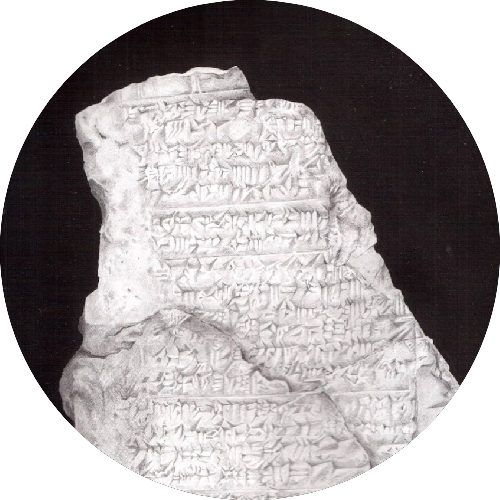Omen List
Artist
My art practice is rooted in the history of drawing, and explores visible and invisible lines and mark-making techniques – I look at the frictions and slippages that occur when (abstract) graphic systems are layered over the material world. My research into graphic systems led me to examine historical divination practices, specifically practices concerned with mark-making and the analysis of observable phenomena. I found these practices to be primarily concerned with establishing systems for the observation of signs as they are displayed in the world around us, and found parallel’s here with the way we read visual and written languages: all requiring leaps of analysis or interpretation that are never as clear as we would like them to be.
This exercise takes the omen compendiums of the ancient Mesopotamians as its inspiration. The omens were presented in a list, formatted as “if this, then that” – a protasis and apodosis forming a conditional sentence. The compendiums contained thousands of ominous signs covering every conceivable occurrence or event, listing the sign to be looked for and what it might signify if it ever were to occur. The source of an omen might be a potentially observable event, however, through extensive scribal practice, all permutations and combinations of variables within the omen were expanded upon until exhausted, resulting in some improbable (but imaginable) events. Beginning with an “if” these omens outline implications rather than predictions, and the art of divination shifts away from fortune or future-telling and into the realm of interpretation, knowledge gathering, and analysis. The activity calls us to be observers, attending with focus to patterns, movements, shapes, phenomena, and boundaries as they occur in the world around us.
Lyndl Hall is a visual artist who has had solo exhibitions at the Burrard Arts Foundation, Vancouver; the Burnaby Art Gallery; the Reach Gallery Museum, Abbotsford; CSA Space, Vancouver; as well as participating in group exhibitions at the Sanatorium Project Space, Istanbul; the Western Front, Vancouver; and Access Artist Run Centre, Vancouver. Her work has been published in The Capilano Review, West Coast Line, and by Publication Studio Vancouver and Moniker Press. Hall has a BFA from Concordia University, Montreal and a MAA in Visual Arts from Emily Carr University of Art + Design, Vancouver. She is a Sessional Instructor in Drawing at the Alberta University of the Arts in Calgary, and her work focuses on the relationship between mark-making and language.
Lyndl Hall
Make a list of ten omens.
Invitation
Visit a public space: a courtyard, a garden, an art gallery or museum, a library, a patio. Find somewhere comfortable to sit for one hour. Generate observations in a notebook of marks, pathways, gestures, events, sounds, light, shadows, etc.
Use this generated material to make a list of ten omens using the format “if this, then that” (technically, a protasis and an apodosis forming a conditional sentence). An example from a compendium:
If the sun rises early and the west wind blows all day, then there will be an eclipse; If the sun is eclipsed and a work-free day, then the land will be diminished;
If when the sun rises it is covered with a dark mist, then there will be no rain.
Expand your observational deductions to include all permutations and combinations of variables until your possibilities are exhausted. Include as many variations by drawing in directions, days, weeks, months, times of day, sizes, colours, etc.
To connect your if / then clauses, try rhyming, homonyms, and homographs at least once. For example, If the point of the pencil snaps, the point of the assignment will be lost; If the bow of the dress is undone, a suitor will bow down.
Organize your list to show surprising syntactic and paradigmatic relationships.
